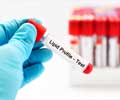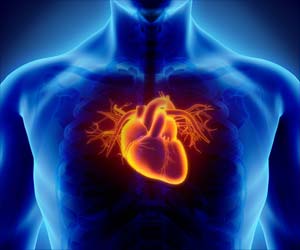Researchers from the Harvard School of Public Health (HSPH) have discovered a previously unknown molecular signalling pathway in the body's fat cells that normally act to suppress
A previously unknown signaling mechanism in fat cells that fights inflammation has been uncovered by researchers from the Harvard School of Public Health (HSPH).
However, they also found that cellular stress caused by obesity could override this protective function and convert the pathway into a trigger of chronic inflammation that raises the risk of insulin resistance, diabetes, and other metabolic disorders.Researchers said that they have shown for the first time that fat-storing cells, or adipocytes, contain a protective anti-inflammatory immune mechanism that prevents the cells from over-reacting to inflammation-causing stimuli, such as fatty acids in the diet.
They said that this signalling pathway serves as a natural counterbalance to a parallel signalling chain that promotes inflammation and can lead to insulin resistance, a prelude to diabetes, and other ailments such as heart disease.
In lean people, the duelling pathways maintain a healthy balance - but only up to a point.
"Overt obesity eventually overwhelms the protective effect of this pathway and flips it into the pro-inflammatory pathway," said Chih-Hao Lee, Assistant Professor of Genetics and Complex Diseases at HSPH, the senior author of the study.
Researchers also identified the molecular switch that determines which pathway is activated under different conditions.
Advertisement
In identifying the compensatory pathway and molecular switch, the researchers have added a new element to the growing understanding of how obesity exerts its unhealthful effects through signals generated by adipocytes.
Advertisement
These stimuli induce the activation of immune cells residing within fat tissues, called M1 macrophages, which in turn release pro-inflammatory cytokines, such as TNFalpha, that cause fat tissue dysfunction and insulin resistance.
Cytokines are messenger chemicals that enable communication between immune cells but could also be produced by fat cells.
Another type of macrophage, known as M2, has the opposite effect, quelling the inflammatory response to free fatty acids. The process that induces M2 macrophages is known as "alternative activation."
So far, the mechanisms controlling M2 macrophage activation within fat tissues had been unclear, as was whether adipocytes themselves controlled this process.
The results reported in Lee's paper, said Hotamisligil (who was not involved in the research), indicate that "the adipocytes actually force macrophages to go one way or the other."
What activates the M2 pathway within fat tissues, Lee and his colleagues discovered, is the fat cells' production of the kind of cytokines that activate M2 macrophages.
These so-called "Th2" cytokines include IL 13 and IL4. (M1 macrophages are activated by a different set of cytokines.)
The researchers found that the key to the Th2 activation switch is a molecule known as PPAR-d within macrophages. PPAR-d is a "nuclear receptor" that receives the Th2 cytokine signals and turns on a cascade of genes and proteins that results in M2 macrophage activation.
Experiments showed that mice in which the PPAR-D function was knocked out could not switch on the M2 macrophage pathway.
When fed a high-fat diet, those mice became obese and developed insulin resistance, confirming the key role of PPAR-d as a switch governing the two pathways.
Lee and his colleagues found that the same switching mechanism is present in hepatocytes, or liver cells, and macrophages in the liver, where they control metabolism of fats.
Mice lacking PPAR-d developed the condition known as 'fatty liver,' which also occurs in humans who have metabolic disruption.
Researchers are hopeful that drugs targeting PPAR-d may be useful in treating insulin resistance and diabetes.
And now that the same mechanism has been identified in liver cells, the same strategy might lead to novel therapies for fatty liver.
Finally, the link between obesity, inflammation and atherosclerosis suggests that PPAR-d-targeted drugs could have potential in preventing heart disease as well.
The study is published in the journal Cell Metabolism.
Source-ANI
RAS/L











